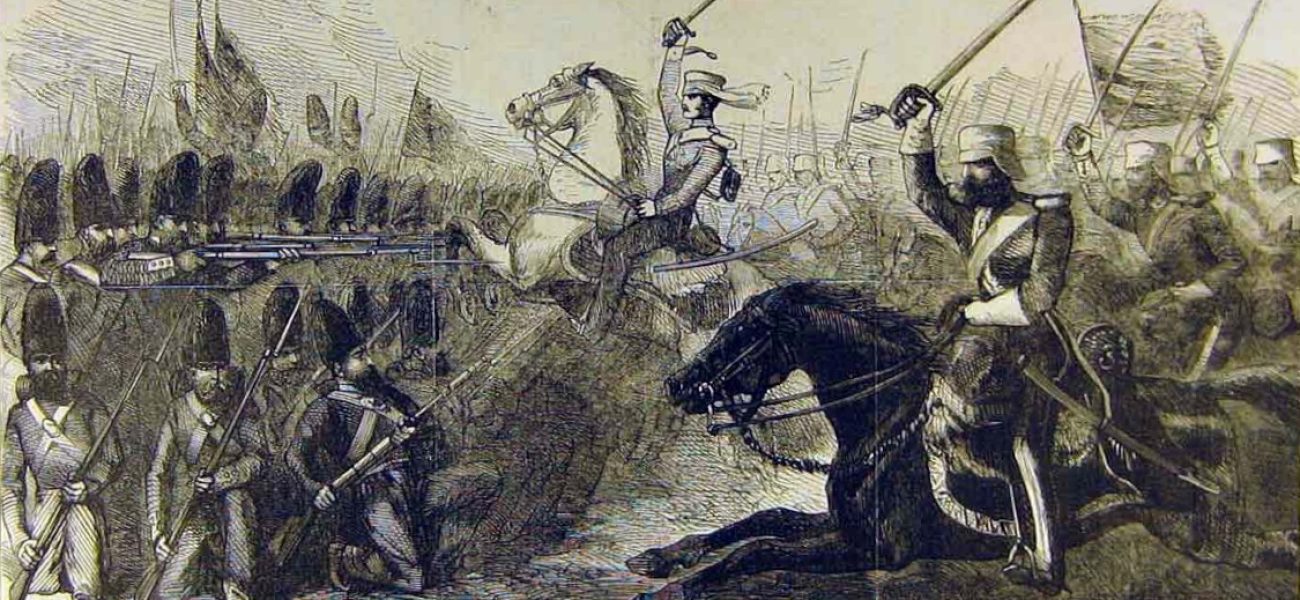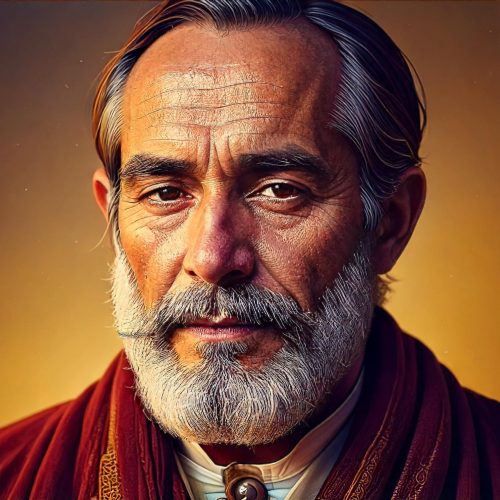The Persians, an ancient and illustrious ethnic group, stand as the cornerstone of Iranian identity, culture, and history. Comprising over half of Iran’s population, they wield considerable influence in shaping the nation’s trajectory. In this comprehensive exploration, we delve into the rich tapestry of Persian heritage, tracing their origins, customs, contributions, and enduring legacy.
Origins and Historical Context
The origins of the Persians trace back to antiquity, intertwining with the earliest civilizations that flourished in the region we now know as Iran. The term “Persian” itself evokes a sense of grandeur and antiquity, harking back to a time when mighty empires rose and fell, leaving an indelible mark on the annals of history.
Scholars believe that the ancestors of the Persians were among the Indo-European peoples who migrated from Central Asia to the Iranian plateau around 1500 BCE. Over time, these nomadic tribes settled in the fertile valleys of the Zagros Mountains and along the banks of the rivers Tigris and Euphrates, where they established agricultural communities and engaged in trade with neighboring civilizations.
One of the defining moments in Persian history came with the rise of the Achaemenid Empire in the 6th century BCE. Under the leadership of Cyrus the Great, the Persians forged a vast and powerful empire that stretched from the shores of the Mediterranean to the Indus River in present-day Pakistan. The Achaemenid dynasty, which lasted for over two centuries, ushered in a golden age of Persian civilization, marked by monumental achievements in architecture, administration, and cultural exchange.
The legacy of the Achaemenid Empire endures to this day, with iconic landmarks such as the ancient city of Persepolis serving as a testament to the grandeur of Persian architecture and engineering. The Persian kings, known as the “Great Kings,” ruled with wisdom and benevolence, fostering a spirit of tolerance and multiculturalism that allowed diverse peoples and religions to coexist within the empire.
However, the glory of the Achaemenid Empire eventually faded with the conquests of Alexander the Great in the 4th century BCE. The Persians, resilient as ever, endured successive waves of invasions and conquests, including those by the Parthians, Sassanians, and later, the Arab Muslims.
Despite the challenges posed by foreign domination, the Persians continued to preserve their cultural identity and traditions, adapting to changing circumstances while retaining a strong sense of pride in their heritage. The Islamic conquest of Persia in the 7th century CE brought about a new chapter in Persian history, as Islam gradually supplanted Zoroastrianism as the dominant religion, and Persian culture absorbed elements of Arab, Turkish, and Central Asian influence.
The centuries that followed saw the emergence of new Persian dynasties, such as the Samanids, Safavids, and Qajars, each leaving its own mark on the fabric of Persian society. The Safavid period, in particular, witnessed a flourishing of Persian art, literature, and architecture, as the empire became a center of cultural and intellectual exchange in the Islamic world.
Today, the Persians continue to inhabit the lands of their ancestors, contributing to the vibrant tapestry of Iranian society with their rich cultural heritage, entrepreneurial spirit, and unwavering resilience. From the bustling metropolises of Tehran and Isfahan to the remote villages of the Zagros Mountains, the legacy of the Persians lives on, a testament to the enduring power of human creativity and ingenuity.
Cultural and Linguistic Identity: Guardians of Persian Heritage
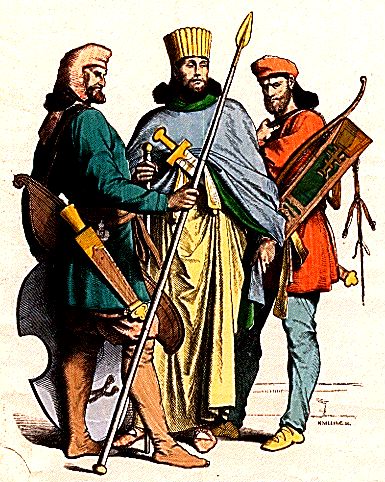
Persian nobleman with Persian soldiers.
At the heart of Persian identity lies a profound connection to language, culture, and tradition. The Persian language, known as Farsi, serves as a unifying force among Iranians and plays a central role in preserving the rich tapestry of Persian heritage. With its origins dating back thousands of years, Farsi has evolved over time, absorbing influences from Arabic, Turkish, and other languages while retaining its distinct character and charm.
Farsi is celebrated for its lyrical beauty and poetic depth, making it not just a means of communication, but a source of national pride and cultural identity. From the epic verses of Ferdowsi’s Shahnameh to the timeless poetry of Hafez and Rumi, Persian literature stands as a testament to the enduring power of the written word. The works of these literary giants, revered across the Persian-speaking world and beyond, continue to inspire generations with their profound insights into the human condition and the beauty of the natural world.
Beyond language, Persian culture is a vibrant tapestry woven from centuries of tradition, artistry, and innovation. Persian art, with its intricate designs, vibrant colors, and geometric patterns, reflects the rich tapestry of Iranian history and culture. From the stunning tilework of mosques and palaces to the delicate miniatures of illuminated manuscripts, Persian artistry captivates the imagination and transports viewers to a world of beauty and wonder.
Music is another integral aspect of Persian culture, with a rich tradition of classical, folk, and contemporary styles. The haunting melodies of traditional Persian instruments such as the santur, tar, and ney evoke a sense of nostalgia and longing, while modern Iranian pop and rock bands continue to push the boundaries of creativity and expression.
Cuisine is yet another cornerstone of Persian culture, with a diverse array of dishes that reflect the country’s geographic and cultural diversity. From the fragrant rice dishes of the north to the aromatic stews of the south, Persian cuisine delights the palate with its bold flavors and exotic spices. Ghormeh Sabzi, kebabs, and tahdig are just a few examples of the culinary delights that have earned Iran a reputation as a gastronomic paradise.
Religion also plays a significant role in shaping Persian identity, with the majority of Iranians adhering to Shia Islam. However, Iran is also home to religious minorities, including Zoroastrians, Christians, Jews, and Baha’is, each contributing to the country’s cultural mosaic with their unique traditions and practices.
Despite the challenges posed by political upheaval, economic hardship, and cultural change, Persians remain steadfast in their commitment to preserving their linguistic and cultural heritage. Through their art, literature, music, and cuisine, they continue to celebrate the timeless beauty of Persian civilization and pass on their traditions to future generations. In doing so, they ensure that the flame of Persian culture burns bright, illuminating the world with its beauty and wisdom.
Contributions to Civilization: A Legacy of Innovation and Influence
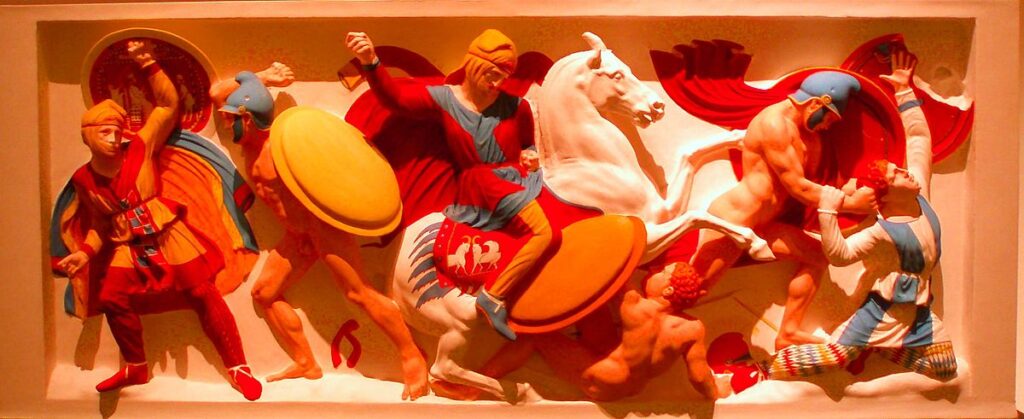
The Persians, throughout history, have made profound contributions to human civilization across a multitude of domains. From literature and science to architecture and governance, their influence has left an indelible mark on the tapestry of human achievement.
Literary Legacy
One of the most enduring contributions of the Persians to world civilization is their literary heritage. Persian literature boasts a rich tradition dating back over a millennium, characterized by its poetry, epics, and philosophical works. Among the most celebrated figures in Persian literature is Ferdowsi, whose epic masterpiece, the Shahnameh (Book of Kings), stands as a testament to the richness of Persian storytelling. Through his epic verses, Ferdowsi immortalized the heroes, legends, and myths of Persian history, preserving the cultural identity of Iran for generations to come. Other luminaries of Persian literature include Rumi, whose mystical poetry transcends cultural and linguistic boundaries, and Hafez, whose divan (collection of poems) continues to captivate readers with its depth of emotion and spiritual insight.
Scientific Advancements
Persian scholars have also made significant contributions to the advancement of science and technology. During the Islamic Golden Age, which saw a flourishing of intellectual and cultural exchange in the Islamic world, Persian scientists played a leading role in fields such as mathematics, astronomy, medicine, and optics. Figures such as Al-Khwarizmi, known as the “father of algebra,” and Avicenna, whose Canon of Medicine became the standard medical textbook in Europe for centuries, made groundbreaking discoveries that laid the foundation for modern science.
Architectural Marvels
In the realm of architecture, the Persians are renowned for their mastery of design, engineering, and craftsmanship. The Achaemenid Empire, with its grand capital at Persepolis, left behind monumental structures that attest to the empire’s architectural prowess. The intricate carvings, imposing columns, and majestic staircases of Persepolis stand as a testament to the ingenuity and ambition of the Persian builders. Similarly, the Safavid dynasty, during the 16th and 17th centuries, ushered in a golden age of Persian architecture, with the construction of stunning mosques, palaces, and gardens that continue to inspire awe and admiration to this day.
Governance and Administration
The Persians have also made enduring contributions to the theory and practice of governance and administration. Under the Achaemenid Empire, Cyrus the Great established a model of benevolent rule that emphasized tolerance, justice, and respect for cultural diversity. This tradition of enlightened governance continued under subsequent Persian dynasties, including the Sassanians and Safavids, who implemented innovative administrative reforms and fostered an ethos of public service and civic responsibility.
The Persians have left an indelible imprint on human civilization through their literary, scientific, architectural, and political achievements. Their legacy serves as a testament to the enduring power of human creativity, innovation, and intellectual curiosity, inspiring future generations to build upon the foundation laid by their Persian predecessors.
Endurance and Resilience: Navigating Through History’s Trials

The Persians have demonstrated remarkable endurance and resilience in the face of numerous challenges throughout their long and storied history. From foreign invasions and conquests to internal conflicts and political upheaval, the Persian people have weathered the storms of history with fortitude and determination.
Foreign Conquests and Invasions
The Persian heartland has been the target of numerous invasions and conquests by foreign powers seeking to dominate the region and exploit its wealth and resources. From the conquests of Alexander the Great in the 4th century BCE to the Arab Muslim conquests in the 7th century CE, the Persians endured successive waves of foreign rule that sought to reshape their society and culture. Despite these challenges, the Persians preserved their cultural identity and traditions, adapting to changing circumstances while retaining a strong sense of pride in their heritage.
Internal Strife and Political Turmoil
Throughout their history, the Persians have also faced periods of internal strife and political turmoil, as competing factions vied for power and influence within the Persian Empire. Dynastic rivalries, succession crises, and court intrigues were common features of Persian political life, leading to periods of instability and uncertainty. Despite these challenges, the Persians remained resilient, forging alliances, negotiating compromises, and finding ways to navigate through the turbulent currents of political intrigue.
Cultural Resilience and Adaptation
In the realm of culture, the Persians have demonstrated a remarkable ability to adapt and evolve in response to changing circumstances and influences. Over the centuries, Persian culture has absorbed elements from neighboring civilizations, including Greek, Arab, Turkish, and Central Asian, while retaining its distinct character and identity. This cultural resilience is evident in various aspects of Persian life, from language and literature to art, music, and cuisine, where a rich tapestry of traditions coexists with elements of cultural exchange and innovation.
Legacy of Resistance and Revival
Despite the challenges posed by foreign domination and internal strife, the Persians have never lost sight of their identity as a proud and resilient people. Throughout history, Persian leaders and ordinary citizens alike have risen up in defiance of oppression and tyranny, rallying around the banner of national unity and independence. The legacy of resistance and revival is deeply ingrained in the Persian psyche, serving as a source of inspiration and strength in times of adversity.
The endurance and resilience of the Persians stand as a testament to the indomitable spirit of the human soul. Through centuries of trials and tribulations, the Persian people have faced adversity with courage and determination, emerging stronger and more resilient with each passing generation. Their story is one of perseverance, adaptability, and resilience in the face of history’s trials, a testament to the enduring power of the human spirit.
Modern Persians: Guardians of Tradition

In the modern era, Persians continue to play a pivotal role in shaping the cultural landscape of Iran and preserving the traditions that have defined their identity for centuries. Despite the challenges posed by globalization, political unrest, and social change, modern Persians remain steadfast in their commitment to safeguarding their cultural heritage and passing it on to future generations.
Cultural Preservation
One of the defining characteristics of modern Persians is their dedication to preserving their cultural heritage in the face of rapid social and technological change. From the bustling streets of Tehran to the remote villages of the Iranian countryside, Persians work tirelessly to ensure that traditional customs, rituals, and practices are upheld and celebrated. Whether it’s the annual celebration of Nowruz, the Persian New Year, or the observance of religious holidays and ceremonies, Persians take pride in honoring their cultural traditions and passing them down to their children.
Artistic Expression
In the realm of arts and culture, modern Persians continue to be prolific creators and innovators, drawing inspiration from their rich cultural heritage while embracing new forms of artistic expression. Iranian cinema, for example, has gained international acclaim for its bold storytelling, innovative techniques, and thought-provoking themes. Filmmakers such as Abbas Kiarostami, Asghar Farhadi, and Jafar Panahi have garnered prestigious awards and accolades, bringing Iranian cinema to the forefront of the global stage.
Similarly, Persian music, literature, and visual arts continue to thrive, with contemporary artists drawing on traditional motifs and themes to create works that resonate with audiences both at home and abroad. From calligraphy and miniature painting to modernist sculpture and installation art, Persians are at the forefront of artistic innovation, pushing the boundaries of creativity and expression in pursuit of cultural enrichment and enlightenment.
Cultural Diplomacy
In an increasingly interconnected world, Persians are also actively engaged in cultural diplomacy, using their artistic and intellectual prowess to promote understanding, dialogue, and cooperation on the global stage. Through initiatives such as cultural exchanges, international exhibitions, and academic collaborations, Persians seek to foster mutual respect and appreciation for the diversity of human cultures and civilizations. By sharing their cultural heritage with the world, Persians hope to build bridges of friendship and solidarity that transcend political and ideological differences.
Resilience in the Face of Adversity
Despite the many challenges they face, modern Persians remain resilient and resourceful, drawing strength from their cultural heritage and sense of community. In times of hardship, whether it’s economic instability, political repression, or social unrest, Persians come together to support one another, relying on the bonds of family, friendship, and shared history to weather the storm. Their resilience in the face of adversity serves as a testament to the enduring power of Persian culture and the indomitable spirit of the Iranian people.
modern Persians are the guardians of tradition, carrying forward the legacy of their ancestors while embracing the opportunities and challenges of the 21st century. Through their dedication to cultural preservation, artistic innovation, and resilience in the face of adversity, Persians continue to inspire and enrich the world with their vibrant cultural heritage and timeless wisdom.
Diversity within the Persian Identity: A Mosaic of Cultures and Traditions
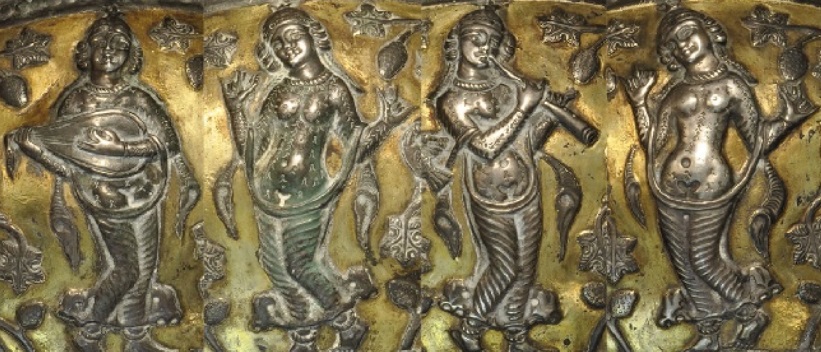
Within the broader umbrella of Persian identity, there exists a rich tapestry of diversity, encompassing a myriad of regional, linguistic, religious, and cultural identities. While the Persian ethnic group forms the majority in Iran, the country is home to a mosaic of ethnicities, each contributing its unique customs, traditions, and perspectives to the rich cultural fabric of Iranian society.
Regional Diversity
Iran’s vast geographical expanse encompasses a diverse array of landscapes, from the lush forests of the Caspian region to the arid deserts of the central plateau, each region characterized by its own distinct climate, flora, and fauna. This diversity is reflected in the cultural traditions and lifestyles of the people who inhabit these diverse landscapes, from the nomadic tribes of the Zagros Mountains to the urban dwellers of Tehran and Isfahan.
Linguistic Diversity
While Persian (Farsi) serves as the official language of Iran and the lingua franca of Persian culture, the country is home to numerous other languages and dialects spoken by ethnic minority groups. These include Azeri, Kurdish, Arabic, Baluchi, and Turkmen, among others, each with its own unique linguistic heritage and cultural identity. Despite the dominance of Persian in public life, efforts are underway to preserve and promote the linguistic diversity of Iran’s minority communities, with initiatives such as bilingual education and cultural festivals aimed at celebrating and preserving the country’s linguistic heritage.
Religious Diversity
Iran is a religiously diverse country, with Islam serving as the predominant faith practiced by the majority of the population. However, the country is also home to religious minorities, including Christians, Jews, Zoroastrians, and Baha’is, each with their own distinct religious practices, beliefs, and cultural traditions. While Islam is the state religion and plays a central role in shaping Iranian society and culture, the government also recognizes the rights of religious minorities to practice their faith freely, within the framework of the country’s constitution.
Cultural Diversity
Cultural diversity is another hallmark of the Persian identity, with each ethnic group contributing its unique customs, traditions, and artistic expressions to the broader tapestry of Iranian culture. From the vibrant dance traditions of the Kurdish people to the elaborate handicrafts of the Gilakis and Mazandaranis, Iran’s cultural landscape is a mosaic of creativity and innovation, enriched by centuries of cross-cultural exchange and interaction. Despite their diverse backgrounds, Persians of all ethnicities share a common bond forged by a shared history, language, and cultural heritage, uniting them in their collective identity as Iranians.
The Persian identity is as diverse and multifaceted as the country itself, encompassing a rich tapestry of regional, linguistic, religious, and cultural identities. While Persians form the majority ethnic group in Iran, the country’s ethnic and cultural diversity is a source of strength and resilience, reflecting the richness and complexity of Iranian society. By embracing and celebrating this diversity, Persians continue to forge a shared sense of identity that transcends ethnic, linguistic, and religious differences, uniting them in their collective pursuit of a brighter future for themselves and their country.
Challenges and Opportunities: The Complexities of a Changing World

In the dynamic landscape of the 21st century, Persians face a multitude of challenges and opportunities that shape their social, economic, and political realities. From the pressures of globalization and technological innovation to the complexities of regional geopolitics and environmental sustainability, Persians must navigate a rapidly changing world while preserving their cultural heritage and national identity.
Globalization and Cultural Homogenization
One of the primary challenges facing Persians in the modern era is the growing influence of globalization, which has led to increased interconnectedness and cultural exchange on a global scale. While globalization brings opportunities for economic growth, innovation, and cultural exchange, it also poses risks to traditional ways of life and cultural diversity. Persians must find a delicate balance between embracing the benefits of globalization while safeguarding their cultural heritage and identity from the pressures of cultural homogenization.
Economic Uncertainty and Social Inequality
Economic uncertainty and social inequality are pressing issues that affect Persians from all walks of life. Despite Iran’s vast oil reserves and rich natural resources, the country faces significant economic challenges, including high unemployment rates, inflation, and a lack of investment in key sectors such as education, healthcare, and infrastructure. Income inequality is also a growing concern, with disparities between the rich and poor widening and exacerbating social tensions. Persians must work together to address these systemic issues and create opportunities for economic growth, social mobility, and inclusive development.
Political Instability and Geopolitical Tensions
Political instability and geopolitical tensions pose significant challenges to Persians, both domestically and internationally. Iran’s complex political landscape, characterized by factionalism, corruption, and repression, undermines the country’s stability and hampers its ability to address pressing social and economic issues. Internationally, Iran faces geopolitical challenges stemming from regional conflicts, nuclear proliferation concerns, and tensions with neighboring countries and global powers. Persians must navigate these geopolitical realities with diplomacy, resilience, and a commitment to peaceful coexistence with their neighbors and the international community.
Environmental Sustainability and Climate Change
Environmental sustainability and climate change represent existential threats to Persians and the broader Middle East region. Iran is highly vulnerable to the impacts of climate change, including droughts, water scarcity, desertification, and extreme weather events. These environmental challenges not only threaten the livelihoods of millions of Persians who depend on agriculture and natural resources for their survival but also exacerbate social tensions and political instability. Persians must prioritize environmental conservation, sustainable development, and climate resilience efforts to mitigate the impacts of climate change and ensure a sustainable future for generations to come.
In the face of these challenges, Persians also have opportunities to harness their creativity, resilience, and collective strength to build a brighter future for themselves and their country. By investing in education, innovation, and inclusive development, Persians can unlock their full potential and overcome the challenges that lie ahead. By embracing diversity, fostering social cohesion, and promoting dialogue and cooperation, Persians can build a more inclusive and prosperous society that honors their rich cultural heritage while embracing the opportunities of the modern world.
A Tapestry of Resilience and Renewal
The Persians stand as a testament to the enduring spirit of humanity – resilient, creative, and deeply connected to their cultural heritage. As guardians of tradition and stewards of progress, they continue to chart a course forward, weaving a tapestry of resilience and renewal that reflects the timeless beauty of Persian civilization. In the words of the poet Saadi, “Human beings are members of a whole, in creation of one essence and soul.” So too are the Persians, integral to the fabric of Iran’s past, present, and future.

